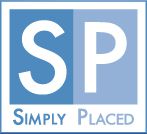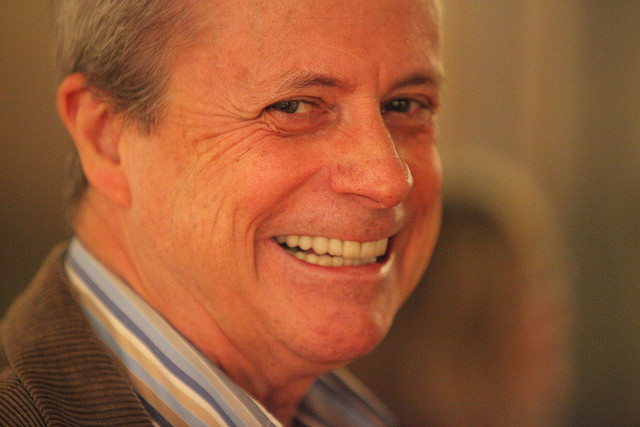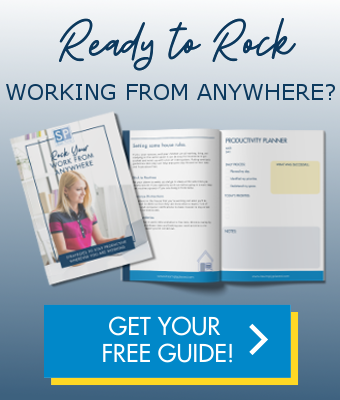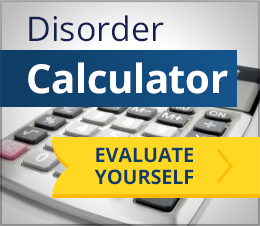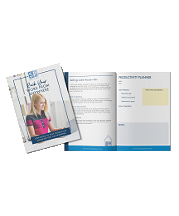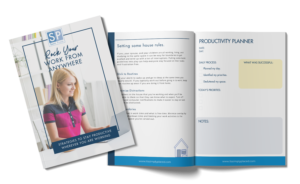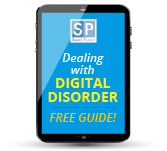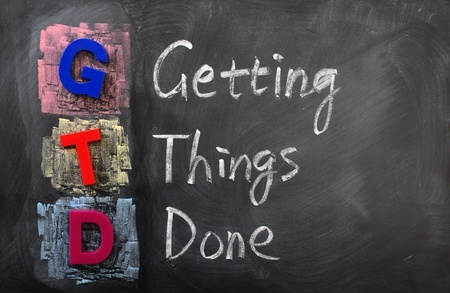
There are thousands of organization books out there; some better than others. Today we’ll take a look at one of the great ones – David Allen’s Getting Things Done, The Art of Stress-Free Productivity. The premise of the book is that you can get more organized and productive while being relaxed and enjoying your life. Allen worked and researched for 20 years before writing his guide and there are some solid strategies found in the book.
Allen says, “Anxiety is caused by a lack of control, organization, preparation and action.” At Simply Placed, helping you get organized is our business and we know just how stressful it can be when you’ve got clutter in your home, office or both, and/or you don’t feel like you have time to focus on what’s really important to you.
Here are five of the most valuable and thought-provoking tips we gleaned from the book.
#1 Take a Bottom-Up Approach
He writes that it may seem to make more sense intellectually to start at a high level with your personal or business mission, but if your day-to-day tasks or clutter are too distracting, you’ll struggle to focus on the big picture. By taking care of your in-box first and getting control of that, you’ll free yourself up to think bigger. If it’s your home you’re talking about, your in-box equivalent may be the stack of mail that piles up, your laundry room catastrophe or clutter that gets in the way of your bigger plans for your home and family.
#2 Abandon the Daily To-Do List
Allen writes that it flies in the face of traditional organizational advice to ditch the list-making habit, but he swears by it. Instead, he recommends a calendar kept clean of miscellanea with three types of listings:
(1) time-specific actions – appointments and things that have a set-in-stone time on a certain date
(2) day-specific actions – appointments and tasks that don’t have a set time on the date like picture day at school, deadline to sign up for a class or camp, etc.
(3) day-specific information – this might be directions to your appointment or event details.
By eliminating the daily list, your time becomes more flexible for urgent things that crop up or unforeseen opportunities plus you don’t have a bad feeling when you can’t strike off list items and have to move them to the next day, and then the next, until you have an unwieldy list dragging you down.
To-Do or Task lists work great for some, but if you struggle to stick to your list, or find lists haven’t worked well for you, try this on for size instead.
#3 Create a Rapid Fire Filing System
He says your filing system should be at-hand and simple enough so that if you need to keep something, you can pick it up from your in-box, mail stack or an email print out and get it into the proper file (if it needs to be filed) within one minute.He says if your filing system isn’t “fun and easy, current and complete” you’ll procrastinate and make your clutter worse.
Allen recommends an A to Z system (to cut down search time) within easy reach of your desk. He also recommends when your files reach ¾ full, you cull. When it gets near to full, do a quick run through to recycle or shred what’s out of date or digitize some.
#4 Four Prong Method for Figuring Out What to Do
Whether you’re a stay-at-home mom, retired, self-employed or in the full or part-time workforce, you have things you must (or should) do. Allen recommends a four criteria analysis to figure out what to do with your available time:
(1) context – can a task be done where you are? If it can, consider the other criteria. If not, move on to another potential task.
(2) time available – can a task be done in the time you have? Better to knock out two short tasks in 15 minutes than to leave a longer task incomplete.
(3) energy available – consider both your mental and physical energy. Creative and analytical tasks need a clear mind and physical tasks need an energetic bod.
(4) priority – if you have several tasks that fit all of the above criteria, choose the one that delivers the highest payoff in terms of work or personal productivity. The task that will get you the best results or make the biggest difference in your personal or professional life is the #1 priority. Work on that first.
#5 Saying “No” More Often and to More Things
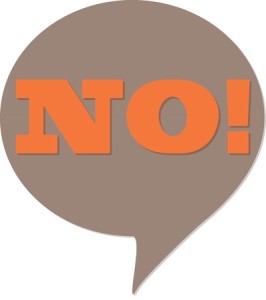
He recommends this in a section called The Weekly Review where you set aside an hour or two of time to look back at what you got done that week, what you need to get done next week and think about anything that fell through the cracks. This review will also allow you to see where and how you may have over-committed yourself so you can avoid this in the future.
While Getting Things Done is written more from a work perspective, it has applications for everyone who wants to be more successful. Even if you don’t have a paycheck-generating job, you work. We all work, have loads to do and can benefit from learning how to be more organized and efficient, particularly with an eye on reducing our stress levels.
To read David Allen’s great productivity guide, click here to buy on Amazon – and consider the low-cost Kindle option to avoid bookshelf clutter.
